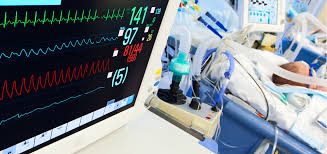Ventilator-Associated Event - Infection Control in Healthcare
Learn about ventilator-associated event (VAE) and their impact on hospital infection prevention and healthcare infection control. Discover strategies to reduce VAE risks and enhance patient safety in healthcare facilities.
CLINICAL STORIESBREAKTHROUGH
10/30/20252 min read


Ventilator-Associated Events (VAE) are a significant cause of morbidity and mortality among patients receiving mechanical ventilation. They represent a range of conditions that develop in patients after the initiation of mechanical ventilation and reflect complications such as infection, inflammation, or impaired gas exchange. VAEs are a key focus in infection prevention and patient safety programs in hospitals worldwide.
Below are some important facts about VAEs and why their prevention is vital in modern critical care:
1. What Is a Ventilator-Associated Event (VAE)?
A VAE refers to any deterioration in a patient’s respiratory condition that occurs after at least two days of stable or improving ventilation. This decline can result from several factors — infections, fluid overload, lung injury, or even issues related to ventilator management.
Within this classification, one of the most well-known and severe subtypes is Ventilator-Associated Pneumonia (VAP), a lung infection that develops 48 hours or more after a patient is intubated and connected to a ventilator.
2. Mechanism and Causes
VAEs occur when pathogens or irritants enter the lower respiratory tract through the ventilator system. This can happen through:
Contaminated ventilator equipment or tubing
Aspiration of secretions from the mouth or stomach
Poor hand hygiene or improper suctioning techniques
Prolonged ventilation, which increases the risk of bacterial colonization
The introduction of invasive devices like endotracheal tubes bypasses the body’s natural defenses, making it easier for bacteria to reach the lungs and cause infection or inflammation.
3. Symptoms and Clinical Presentation
Patients developing a VAE may show signs such as:
Worsening oxygenation or increased oxygen requirements
Fever or chills
Purulent respiratory secretions
Increased white blood cell count
New or worsening lung infiltrates on imaging
Because many ventilated patients are already critically ill, these symptoms can sometimes be subtle, making early detection challenging but essential.
4. Impact on Patient Outcomes
VAEs are associated with:
Longer ICU stays and increased hospitalization costs
Higher mortality rates, especially in patients with underlying diseases
Extended need for antibiotics, which can promote resistance
Greater burden on healthcare systems, including staff workload and resource use
According to the CDC, VAEs are among the most frequent hospital-acquired complications in intensive care units, highlighting the urgent need for consistent prevention strategies.
5. Prevention and Infection Control Strategies
Preventing VAEs requires a combination of evidence-based practices, technology, and behavioral adherence among healthcare professionals. Effective prevention includes:
Strict hand hygiene and aseptic technique during all ventilator care activities
Regular oral hygiene with antiseptic solutions
Maintaining proper head elevation (30–45 degrees) to reduce aspiration risk
Daily assessment of readiness to extubate to minimize ventilation duration
Using closed suction systems and ensuring all ventilator components are properly disinfected
Continuous monitoring and data collection to detect early trends or compliance issues
Modern hospitals are also adopting AI-driven monitoring tools and real-time compliance feedback systems (such as Soapy’s infection prevention technologies) to ensure consistent adherence to hygiene protocols and minimize the risk of device-related infections.
6. Treatment
When a VAE — particularly VAP — is suspected, clinicians typically perform diagnostic testing (such as cultures of respiratory secretions) and initiate targeted antibiotic therapy. Supportive measures, including optimal ventilator settings, hydration, and pulmonary hygiene, are also critical to patient recovery.
Treatment must be balanced carefully: overuse of antibiotics can lead to resistance, while undertreatment risks worsening infection and respiratory failure.
7. The Bigger Picture: Why VAE Prevention Matters
VAEs are more than a clinical complication — they’re a measure of healthcare quality. Hospitals with lower VAE rates often have stronger infection prevention programs, better staff training, and higher patient safety outcomes.
Preventing ventilator-associated events isn’t just about managing machines — it’s about reinforcing human vigilance, consistency, and hygiene.
By combining hand hygiene compliance, smart technology, and standardized ventilator care bundles, healthcare systems can significantly reduce the burden of VAEs — saving lives, reducing costs, and improving the quality of care for the sickest patients.
Ventilator-associated Event (VAE)

Soapy In The News
ABOUT SOAPY
© 2025. All rights reserved Soapy Care LTD | Designed by VeloGTM LLC
